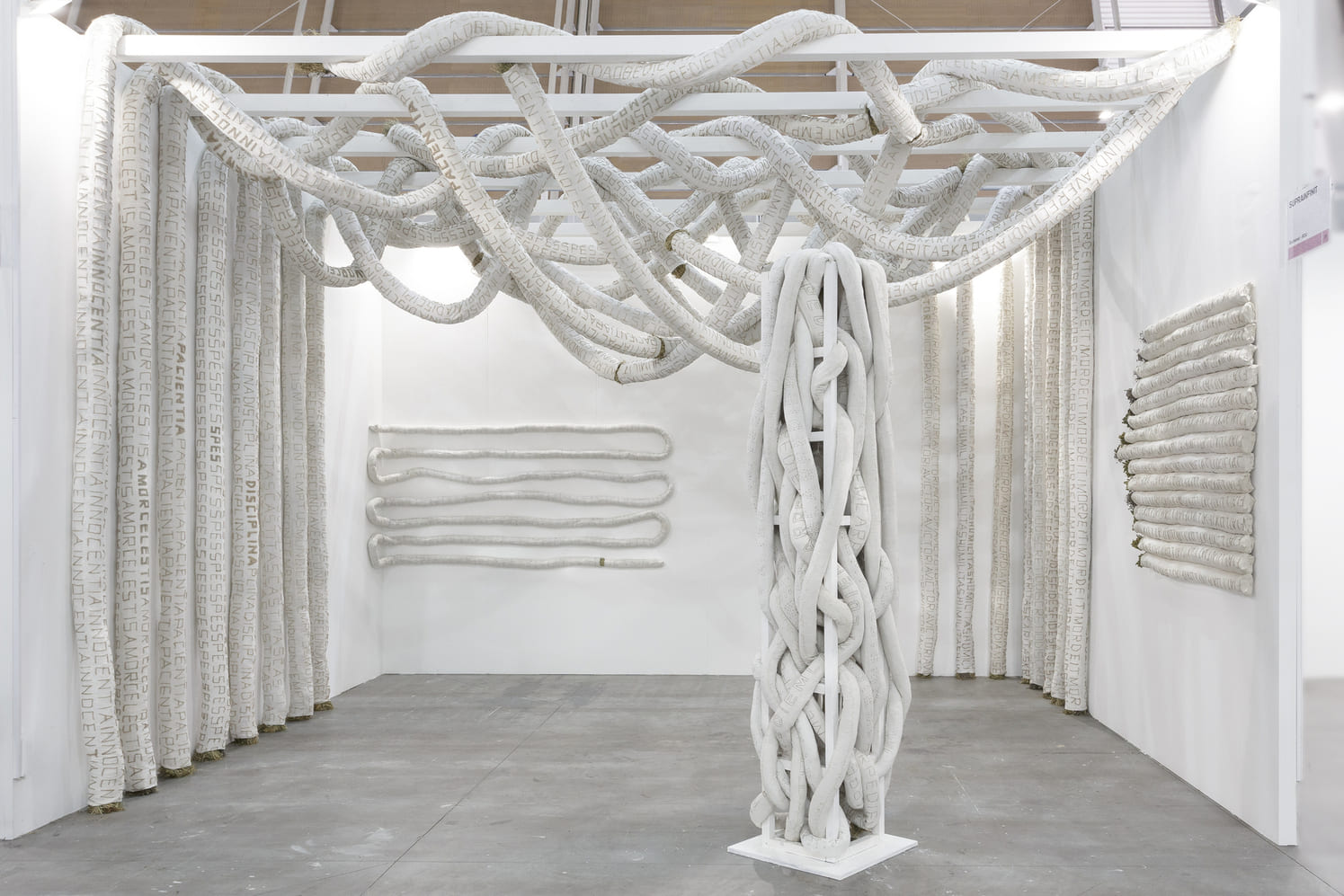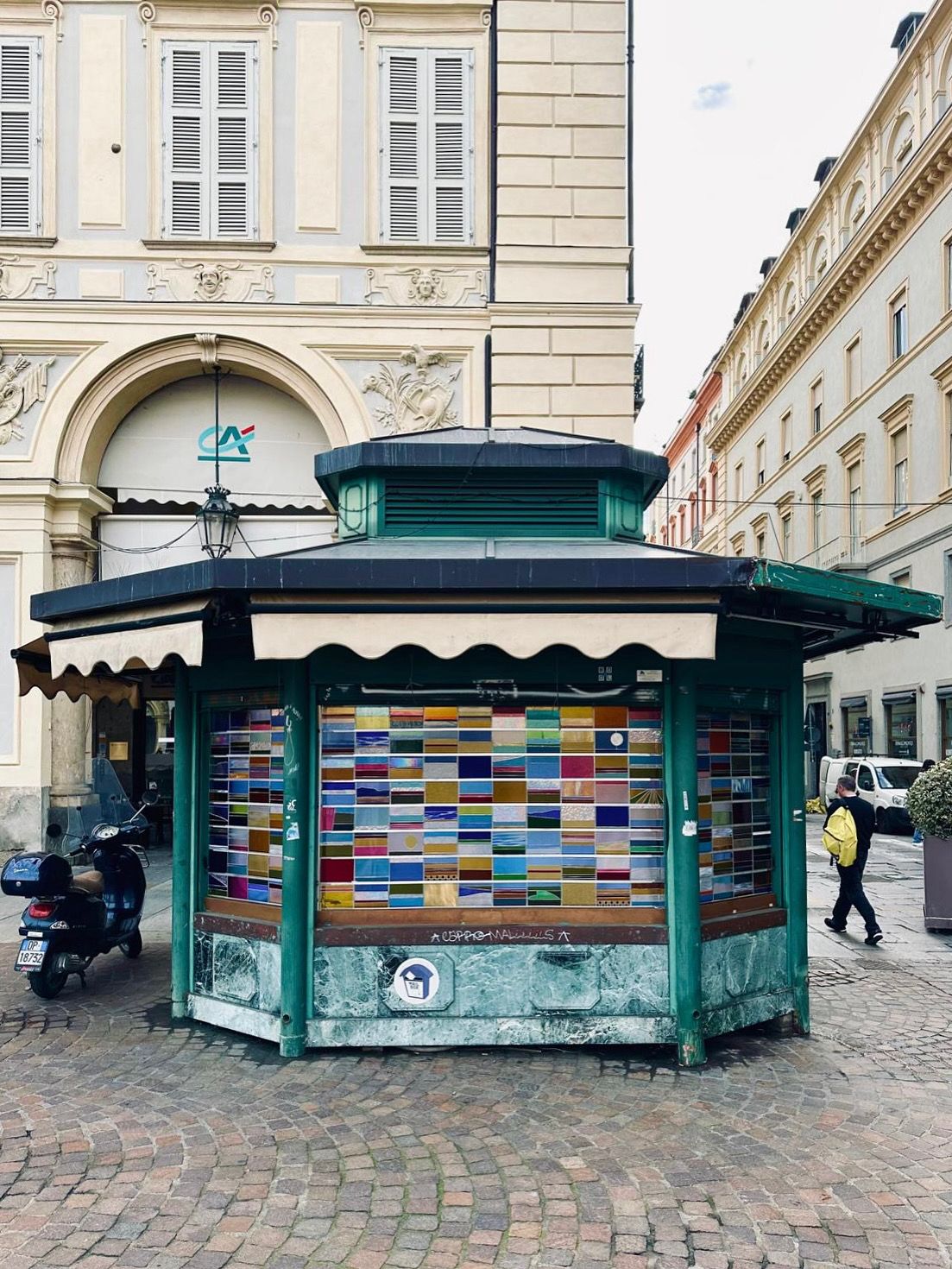
Hoveringover the large sheets of unstretched canvases, Rebekka Stuhlemer’s paintingsare portals that connect bodily and environmental realms, that channel movementand colours in complex and intuitive compositions. Her works are fugitive,fragmented, corporeal, they cross-contaminate and self-distance. Their infusedmovement sparks a soft level of animism that is carried along by the gaze ofthe viewer.
Whatis compelling about the artist’s practice is the manner in which she situatesherself – intuitively and physically – within multiple ecosystems thatundermine the Cartesian mind-centered understanding of human existence. Whereasher expressive brush strokes and bright, watery colours share abstractionistfeatures, the artist’s insertions of micro-organic elements create a specificsystem of proceeding in time and body. Each brush stroke reacts to the previousone and by keeping a small distance between each of the lines, the finalassemblage morphs together all its forming parts.
The exhibition holdinga shell, walking a line presents a series of four site-specific paintings thatmerge with each other and that were initially determined by the usage of thedark blue colour. Painted in multiple layers, the artist took her textilesoutdoors and painted the first layer in different environments, by the riverRhine or at the beach, allowing the elements of these natural environments topervade the canvas, to infiltrate the shapes of the brush strokes. Dust andstudio dirt leave traces in Stuhlemer’s artworks, and the intuitive feeling forcolour continues the artist’s symbiotic relation with the inner and outerenvironment. Immediate and visceral with her work, the artist finds comfort in“the right to opacity” rather than in the need for transparency that isasked from us in western societies. Opacities can coexist and converge, weavingfabrics. To understand these truly one must focus on the texture of the weaveand not on the nature of its components, claims Éduard Glissant in his textabout opacity. The painting process does not start with ideas, she does notseek words around her, nor a descriptive shell around her paintings.Contingency is deeply rooted in the moves of her brush and in the hand-madeprepared pigmented hues. While the shades bleed amongst themselves, the linessurrender to the distance. Molecular moves happen not only within the painterlysurfaces, but also within the artist’s embodied interaction with the work.Bending over the large-scale canvases, forging this performative closeness tothe painting process itself, Stuhlemer only uncovers her larger perspective ontothe work at the end of the painting process. She gazes at the work while ithangs. Before that, it’s action, gesture, eroticism, colour sensitivity.
Softening thearchitecture of multiple building facades in the gallery’s neighborhood, theoutdoor installation of paintings knots a visual and somatic dialogue betweenthe textile works and the often hard surfaces of the buildings. There is anunexpected meeting point in the hanging of the works while the architecturalboundaries are swallowed by the large cavity of the canvases. The outdoorstextiles inhale and exhale the environment they are conceived and exhibited in,relinquishing any possible form of control over the canvases. She does not usemore than two colours in her works, and yet the bright and flaxen hues, theorganic lines and creatures, the embedded movement dwell in a collective bodythat is not only hers, but the surroundings’ also.
Exhibition views






_Suprainfinit2022.jpg)



_Suprainfinit2022.jpg)
_Suprainfinit2022.jpg)






.jpg)
%20(1)%20(1)%20(1)%20(1).jpg)

